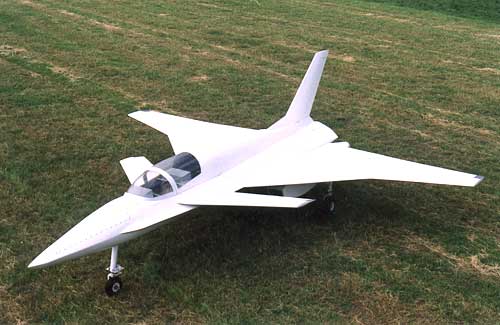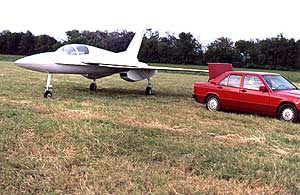|
The Hamilton AeroSpace HX-322, is a two place tandem airplane. This airplane combines state of the art composite technology, high maintainability, and outstanding performance figures. The Hamilton HX-322 was designed with the following major objectives:
The composite airframe is a basic tenet of Hamilton AeroSpace. This technology has several distinct advantages over the dated aluminum rigs, skin, and rivets approach including:
This airframe was initially conceived with goals of civilian use, and a determination that Hamilton AeroSpace products will never be an entry in the column, in-flight structural failure. Design strength is 12 g's, positive or negative.
The performance of this airplane, with twin jet configuration, is outstanding, and will prove a superb, fast executive airplane for a variety of general aviation uses. The tandem seating arrangement, with front cockpit solo capability, was dictated by the performance goals. The nose section has ample space for avionics equipment, including weather radar if desired. Instrument panel and side consoles have adequate room for a normal complement of instruments, avionics, and controls. Conventional mechanical controls, with center mounted stick in both cockpits, will be used. The bubble type canopy will provide 300 degree visibility. Additional equipment/baggage space is available immediately aft of the rear cockpit bulkhead. Control linkage and electrical wiring pass through sealed access ports to provide for cabin pressurization if desired.
Maintainability of this sophisticated, but simple, airframe was enhanced by the desire to maintain structural unit integrity of the molded composite airframe. All controls, coaxial cable runs, and hard wiring, pass from the cockpit aft through wing root/empennage continuous fairings on either side of the fuselage external to the principal structural unit. The large main fuel cell will be the only item contained internal to the primary structure. Waist high access panels will allow easy inspection or maintenance on all engine/flight utility systems controls, connections, and wiring. All engine and engine accessory parts are outside of the primary fuselage structure. Total engine access is enabled by simple removal of the top and bottom cowl units. Avionics are totally contained in the nose section of the airplane, shelf mounted and accessible through quick opening access panels. Design data are tabulated as attached preliminary. Hamilton AeroSpace
Summary The HX-322 by Hamilton Aerospace is an all-composite, twin engine cranked arrow wing - canard business aircraft kit plane. This aircraft was designed for the pilot/businessman in mind. It is capable of high speed long range, with comfort in mind. The twin engine layout affords safety that no other kit plane provides. The cockpit layout provides for front or rear full IFR capability. A large amount of baggage can be carried.
HAMILTON AEROSPACE |
 All
composite airframe. Graphite, and glass with epoxy and aerospace foam
All
composite airframe. Graphite, and glass with epoxy and aerospace foam 




